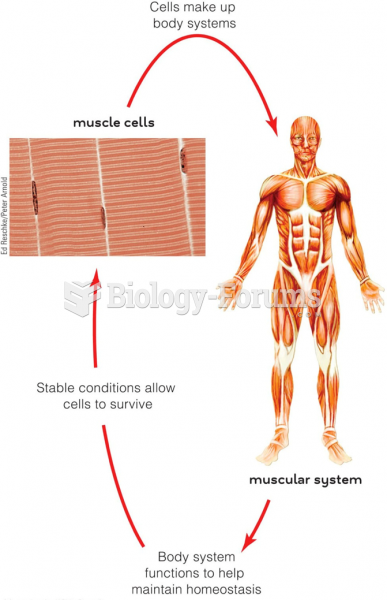Answer to Question 1
Drugs are reinforcing in several ways, and operant conditioning helps explain the role of drugs as reinforcers. First, drug-induced euphoria produces positive physical feelings and increases the likelihood that the drug will be used again. This is positive reinforcement. Drug use is also maintained by negative reinforcement, in which repeated drug use removes an unpleasant state. If you are feeling tired and lethargic and grabbing a cup of coffee removes that lethargic state, this is negative reinforcement. Positive reinforcement processes are more directly implicated in the initial stages of addiction, with negative reinforcement mechanisms playing an increasingly important role as addiction progresses.
Conditioning through positive or negative reinforcement involves more than the simple act of using the drug. Environmental aspects such as settings in which the drugs are taken, the people with whom drugs are used, or the paraphernalia used to administer the drugs themselves become cues (signals) to begin drug use. This is why, for example, some people who are trying to quit smoking say, I do OK till I go into a baronce I start to drink, I really need a cigarette. This fits well with classical conditioning models of substance use. In these models, external stimuli that have been paired with drug use produce some of the same bodily sensations that previously have been caused by the drug itself (i.e., the conditioned and unconditioned responses are similar). In this way, stimuli that previously had signaled the arrival of a drug (the sight of a person or passing a particular street corner) seem to set off a whole host of feelings and reactions that trigger drug use. In the case of drug-compensatory conditioned responses, regulatory bodily changes occur in the presence of conditioned stimuli (e.g., drug paraphernalia, fellow drug users) to counteract the anticipated effects of drugs or alcohol. If the individual does not engage in substance use following these compensatory bodily changes, he or she feels considerable pain and discomfort (i.e., withdrawal). As a result, the individual may engage in substance use as a form of escape or avoidance from withdrawal symptoms.
Answer to Question 2
1. No single treatment is appropriate for all individuals; 2. Treatment needs to be readily available; 3 . Effective treatment attends to multiple needs of the individual, not just his or her drug use; 4. An individual's treatment and services plan must be assessed continually and modified as necessary to ensure that the plan meets the person's changing needs; 5. Remaining in treatment for an adequate period of time is critical for treatment effectiveness; 6. Counseling (individual and/or group) and other behavioral therapies are critical components of effective treatment for addiction; 7. Medications are an important element of treatment for many patients, especially when combined with counseling and other behavioral therapies; 8. Addicted or drug-abusing individuals with coexisting mental disorders should have both disorders treated in an integrated way; 9. Medical detoxification is only the first stage of addiction treatment and by itself does little to change long-term drug use; 10. Treatment does not need to be voluntary to be effective; 11. Possible drug use during treatment must be monitored continuously; 12. Treatment programs should provide assessment for HIV/AIDS, hepatitis B and C, tuberculosis and other infectious diseases, and counseling to help patients modify or change behaviors that place themselves or others at risk of infection; and 13. Recovery from drug addiction can be a long-term process and frequently requires multiple episodes of treatment.







